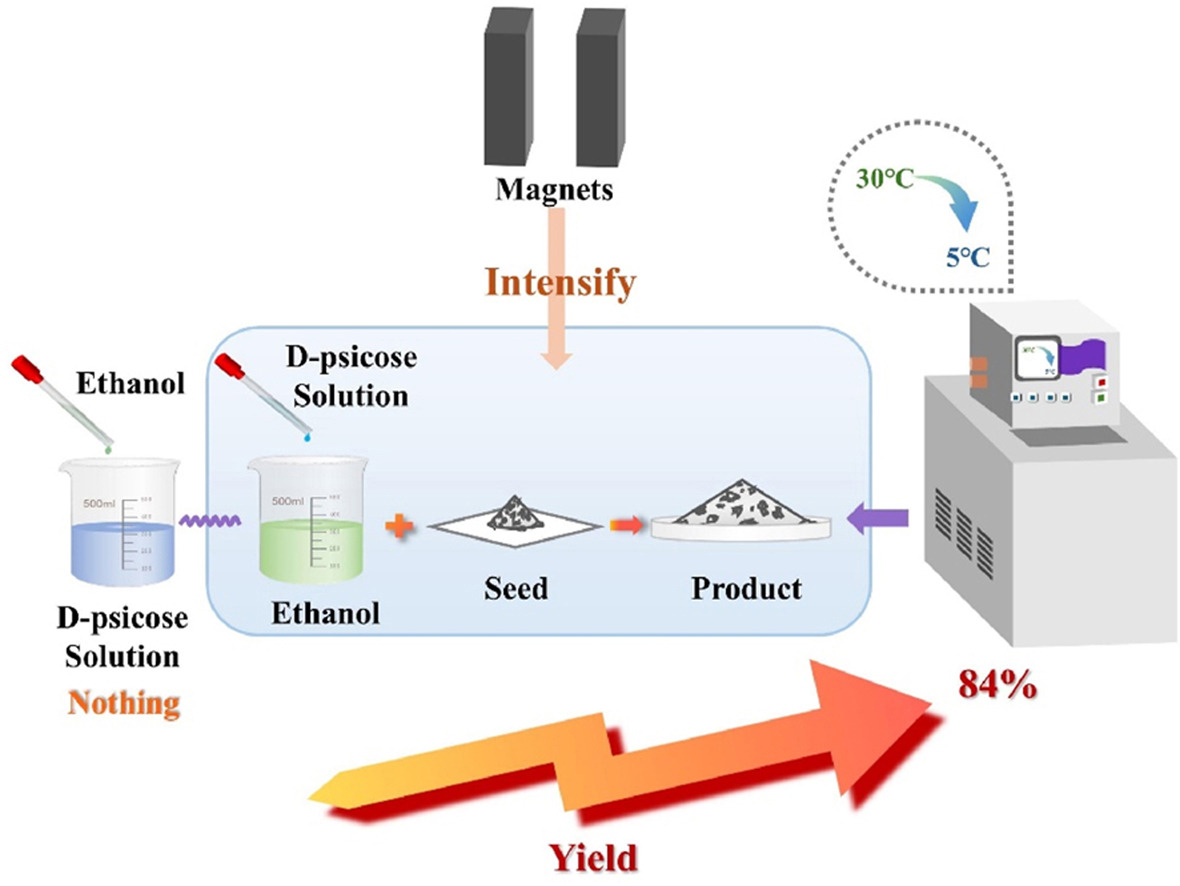• Solubility of D-psicose was determined to support the coupled crystallization.
• Reverse antisolvent crystallization shorten crystallization cycle.
• A coupled crystallization process improved yield.
• Magnetic field strengthened the crystallization process of D-psicose.
D-psicose is a rare sugar that has currently attracted more attention for its unique functionality and medical potential. It is mainly obtained by converting fructose through DTE or DPE, followed by purification and crystallization steps. In this study, an innovative coupled reverse antisolvent-cooling crystallization process was developed to produce D-psicose with high yield and reasonable crystal size. Specifically, the usage of antisolvent ethanol decreased the viscosity of the whole system, which somehow improved the mass transfer process, while the cooling process ensured the high yield since the solubility of D-psicose was found to drop with temperature. During the study, the coupled process was optimized through response surface methodology, and the yield of 84% was obtained. With the precise regulation to supersaturation, the crystal size was enlarged to 266 μm, which was suitable for downstream filtration, drying etc. To further intensify the industrial productivity, a magnetic field was used throughout to intensify the crystallization process, with which the total crystallization duration was shortened to 50 h from common 70–195 h. It is believable that the new coupled reverse antisolvent-cooling crystallization was advantageous to efficiently produce D-psicose with high quality.

